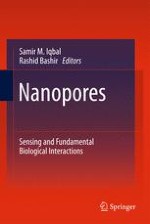2011 | OriginalPaper | Buchkapitel
5. Solid State Nanopores for Selective Sensing of DNA
verfasst von : Waseem Asghar, Joseph A. Billo, Samir M. Iqbal
Erschienen in: Nanopores
Verlag: Springer US
Aktivieren Sie unsere intelligente Suche, um passende Fachinhalte oder Patente zu finden.
Wählen Sie Textabschnitte aus um mit Künstlicher Intelligenz passenden Patente zu finden. powered by
Markieren Sie Textabschnitte, um KI-gestützt weitere passende Inhalte zu finden. powered by
